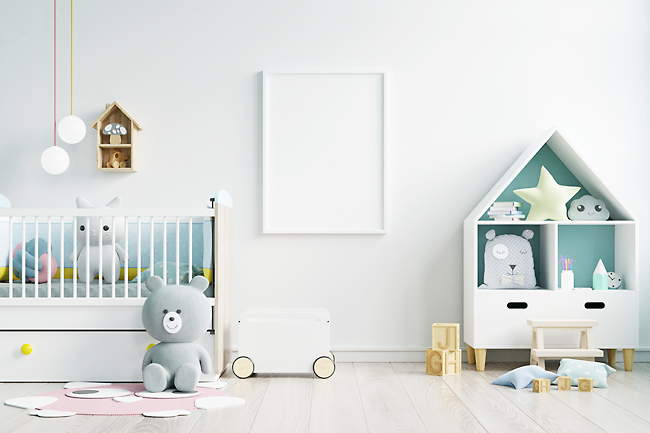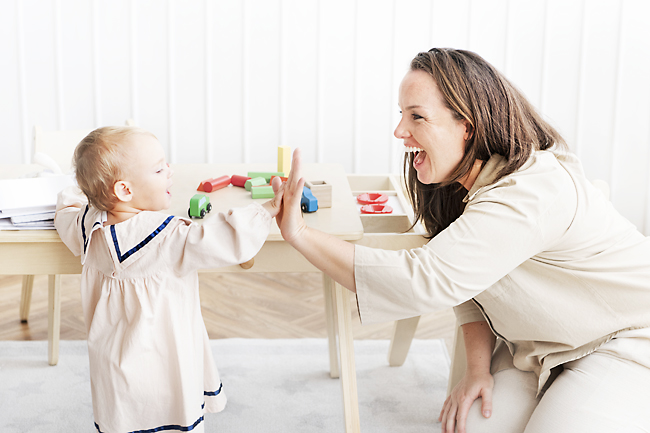Christina Sturdivant Sani
THE WASHINGTON POST – There was a time expectant parents would deck out their nursery with a dedicated crib, changing table and rocker they had chosen just for baby. Things have changed, though. You can still incorporate safari animals, butterflies or a favourite Disney character in your child’s nursery – but these days instead of going wall-to-wall with themed decor interior designers and parents are looking for practical, stylish options that will evolve with children as they get older.
“It’s not as much about creating a scene for the room, but an experience that will allow them to transition throughout those first five years – at least,” said Kiyonda Powell, owner of a DC-based interior design studio.
If you want to create a kid’s room with longevity in mind, it’s best to leave the themed sets in the store, said Powell, who designed a room last year for her now 10-month-old son.
“When everything is so matchy-matchy, it makes it hard to switch things out and make it flexible over time.”
She suggested sprinkling characters or other kid-friendly themes throughout the room with throws, mobiles, rugs or teddy bears – things that can be changed easily and inexpensively over time.


If you’re looking for decor that will grow with the child, “art would definitely be something I would want to include”, Powell said. In her son’s room, an image of a Black boy holding a slingshot with perfect posture hovers over the crib. “I wanted to start an art collection for him, and I wanted to pick something that was really fearless,” she said.
Another thing to keep in mind: You don’t have to use colours traditionally associated with kids. For instance, black-and-white nurseries are trending right now, according to Byron Risdon of Byron Risdon LLC, an interior design studio in DC.
“That doesn’t seem very typical for kids or babies, but I think it’s very stylish and chic,” he said, adding that a more mature colour scheme won’t neglect the fact that it’s a child’s room. “There are certain elements that will always make it feel like a kid’s room, right? There’s this crib there – you’re definitely leaning in one direction.”
Need guidance for choosing essential furniture pieces – cribs, dressers, and chairs – that will grow with your child? Here’s what Powell and Risdon suggest, including specific product recommendations for each.
Choose a crib that can morph into a bed. Some convertible cribs turn into toddler beds, while others expand to twin and full sizes, Risdon said. “So it really can grow all the way into the teen years if you choose to hold on to it or use it for your next kid.”
Powell purchased a convertible bed made of wood and acrylic for her son. “The wood is soft enough so that when he’s moving around in there, he’s not going to hurt himself,” she said, adding that she would avoid cribs made of metal or other hard materials.
For style, Risdon recommended Lucite convertible cribs. “It’s just a step outside of the norm,” he said. The material is clear, so “it opens you up to playing around with colors and patterns” for other pieces of furniture in the room, because it will pair well with lots of different styles and finishes.
Consider function when selecting a dresser. If you look at a dresser for what it is – a functional piece of furniture to store items – you can “break the mould and get out of the whole like nursery feel,” Risdon said. “You can either buy a dresser that fits with the overall style of the room, or buy a vintage dresser.”
That’s exactly how Powell approached selecting her son’s first dresser. “It’s a vintage piece that I found secondhand and was very nostalgic to something that my grandmother used to have. So it wasn’t given to me, but it reminded me of something that was in the family.”
She recommended purchasing a low dresser instead of a full changing table, which baby will certainly outgrow. “You could convert dressers into changing tables on the top as needed,” Powell said.
One way to do this is by attaching large pieces of Velcro to the dresser and the four corners of the changing pad, then pressing the pad onto the dresser. You could also place a nonskid mat between the dresser and the pad to keep the pad from shifting. The simplest option is to find a changing pad that already has a sticky surface, then attach it to your dresser. In all cases, you may need to cut the pads or mats to fit your dresser’s dimensions.
And with any dresser or large piece of furniture in a child’s room, it’s important to anchor it to the wall to prevent tipping. You can purchase an anchoring kit to attach it. To baby-proof the drawers, try adhesive magnetic locks, tension rods, or safety strap locks.
Upgrade the traditional rocking chair. Instead of settling for a rocker for her son’s room, Powell purchased a recliner with a USB charging port. “You could sit there and charge your phone, play music, take a nap, rock and swivel,” she said. When your child gets older, they can sit in the chair and “pull out a book or do their homework with a laptop table”. Or you could use the chair elsewhere in your home.
For a nursery project with lots of space, Risdon purchased a chaise longue. “As a new parent, you can sleep on that,” he said. “And it’s something that you won’t feel like, ‘Well, I have to get rid of this. I don’t have a baby to rock to sleep anymore.’ If that room ever becomes a guest room, it’s just a nice chair to have for guests to relax on.”
For a chair that will last many years, Powell and Risdon advise purchasing performance fabrics, pretreated pieces and slipcovered furniture.



















































